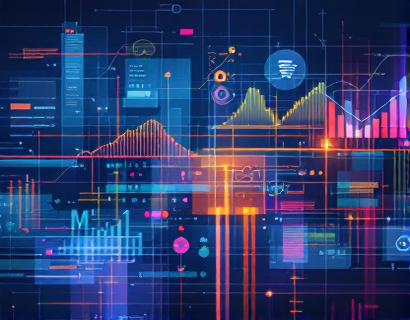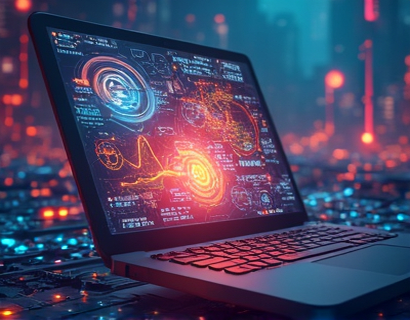Unlocking NFT Potential: Empowering Creators and Collectors in the Digital Age
The emergence of Non-Fungible Tokens, or NFTs, has revolutionized the way we perceive and interact with digital assets. This transformative technology is not just a passing trend but a fundamental shift in digital ownership and creativity. By leveraging blockchain technology, NFTs provide a unique way to represent ownership of digital items, from art and music to virtual real estate and collectibles. This article delves into the profound impact of NFTs on creators and collectors, exploring how this technology is reshaping the digital landscape and opening new avenues for innovation and engagement.
The Rise of NFTs and Digital Ownership
The concept of digital ownership has long been a challenge in the online world, where copies can be endlessly replicated and distributed. NFTs address this issue by embedding unique identifiers and metadata into digital assets, ensuring that each token is one-of-a-kind. This innovation has given rise to a new economy where digital items can be bought, sold, and traded with the same authenticity and value as physical goods. For creators, this means a new way to monetize their work, while for collectors, it offers a chance to own and possess unique digital items with provenance and scarcity.
Empowering Creators
Creators are at the forefront of the NFT revolution, finding novel ways to express themselves and connect with audiences. The ability to mint and sell NFTs allows artists, musicians, writers, and other content creators to directly engage with their fans, bypassing traditional intermediaries. This direct connection not only enhances their revenue streams but also fosters a more authentic and loyal community. For instance, artists can release limited edition digital artworks, offering exclusive experiences or behind-the-scenes content to buyers, thereby deepening the relationship with their audience.
Moreover, NFTs provide creators with a new form of intellectual property protection. By registering their digital assets on the blockchain, creators can prove ownership and authenticity, reducing the risk of piracy and unauthorized use. This transparency and security are crucial in building trust within the digital marketplace, encouraging more creators to explore and invest in NFTs.
Enhancing the Collector Experience
Collectors, too, benefit immensely from the NFT ecosystem. The ability to own unique digital items offers a sense of exclusivity and prestige that is hard to replicate in the physical world. NFTs allow collectors to curate personalized digital collections, showcasing their tastes and interests in a virtual space. This digital curation extends beyond mere ownership; it becomes a form of self-expression and identity formation in the online community.
Furthermore, the transparency of blockchain technology ensures that collectors can verify the authenticity and history of their purchases. Each NFT comes with a detailed record of its ownership history, transactions, and metadata, providing a level of assurance that traditional collectibles often lack. This trust and verifiability enhance the collector's experience, making the digital asset market more accessible and appealing.
Building a Dynamic Community
The true power of NFTs lies in the communities they foster. Platforms that support NFT creation and trading become hubs of creativity and interaction, where creators and collectors can collaborate, share ideas, and build relationships. These communities are not just passive observers but active participants in the ecosystem, driving innovation and growth.
For creators, being part of a vibrant community provides valuable feedback and support, helping them refine their work and reach new audiences. Collectors, on the other hand, benefit from a rich network of like-minded individuals, enhancing their collecting journey through shared knowledge and experiences. This sense of belonging and collaboration is a key factor in the sustained engagement and growth of the NFT market.
Innovative Features and Tools
To fully harness the potential of NFTs, platforms must offer intuitive and powerful tools for creators and collectors. These tools should simplify the process of minting, buying, selling, and managing NFTs, making the experience seamless and user-friendly. For creators, this might include features like customizable templates, easy upload processes, and integrated marketing tools to promote their work.
For collectors, features such as personalized portfolios, transaction history tracking, and community forums can enhance the overall experience. Additionally, incorporating educational resources and tutorials can help newcomers understand the nuances of NFTs and blockchain technology, lowering the barrier to entry and broadening the user base.
Redefining Digital Scarcity and Value
One of the most significant impacts of NFTs is the redefinition of digital scarcity. In the traditional digital world, items can be infinitely replicated, making them inherently less valuable. NFTs change this paradigm by assigning uniqueness to digital assets, creating a new form of scarcity. This shift not only increases the perceived value of digital items but also opens up new economic opportunities. Creators can set prices for their NFTs based on demand, rarity, and other factors, while collectors can invest in digital assets with the potential for appreciation.
Moreover, the scarcity created by NFTs can drive limited edition releases and exclusive content, fostering a sense of urgency and exclusivity. This can lead to vibrant marketplaces where rare and highly sought-after NFTs command premium prices, further validating the concept of digital ownership and value.
Challenges and Considerations
While the potential of NFTs is vast, it is essential to acknowledge the challenges and considerations that come with this technology. Environmental concerns related to blockchain's energy consumption are a significant issue, prompting the industry to explore more sustainable solutions such as proof-of-stake consensus mechanisms. Additionally, the volatility of the cryptocurrency market can impact the value of NFTs, requiring collectors to be mindful of market trends and risks.
Legal and regulatory frameworks are also evolving to address the unique aspects of NFTs. Issues such as copyright, taxation, and consumer protection need to be carefully navigated to ensure a fair and secure environment for all participants. Education and awareness are crucial in addressing these challenges, helping creators and collectors make informed decisions.
The Future of Digital Ownership
As NFT technology continues to mature, the possibilities for creators and collectors are endless. Beyond art and collectibles, NFTs can transform industries such as gaming, real estate, and entertainment. In gaming, for example, NFTs can represent unique in-game items and assets, creating new revenue streams and enhancing player engagement. In real estate, digital tokens can represent ownership of virtual properties, opening up new markets and investment opportunities.
The integration of NFTs with other emerging technologies, such as augmented reality (AR) and virtual reality (VR), can further enrich the digital experience. Imagine owning a digital artwork that comes to life in a VR environment, or participating in virtual events where NFTs serve as tickets or exclusive access passes. These innovations have the potential to redefine how we interact with digital content and each other.
Conclusion
The advent of NFTs marks a pivotal moment in the digital age, offering unprecedented opportunities for creators and collectors. By providing tools for creating, trading, and managing unique digital assets, NFT platforms are empowering individuals to explore new forms of creativity and ownership. As the ecosystem continues to grow and evolve, the impact of NFTs will extend far beyond the digital realm, influencing how we value and interact with content in the years to come. Embracing this transformative technology can lead to a more vibrant, inclusive, and innovative digital world.










































